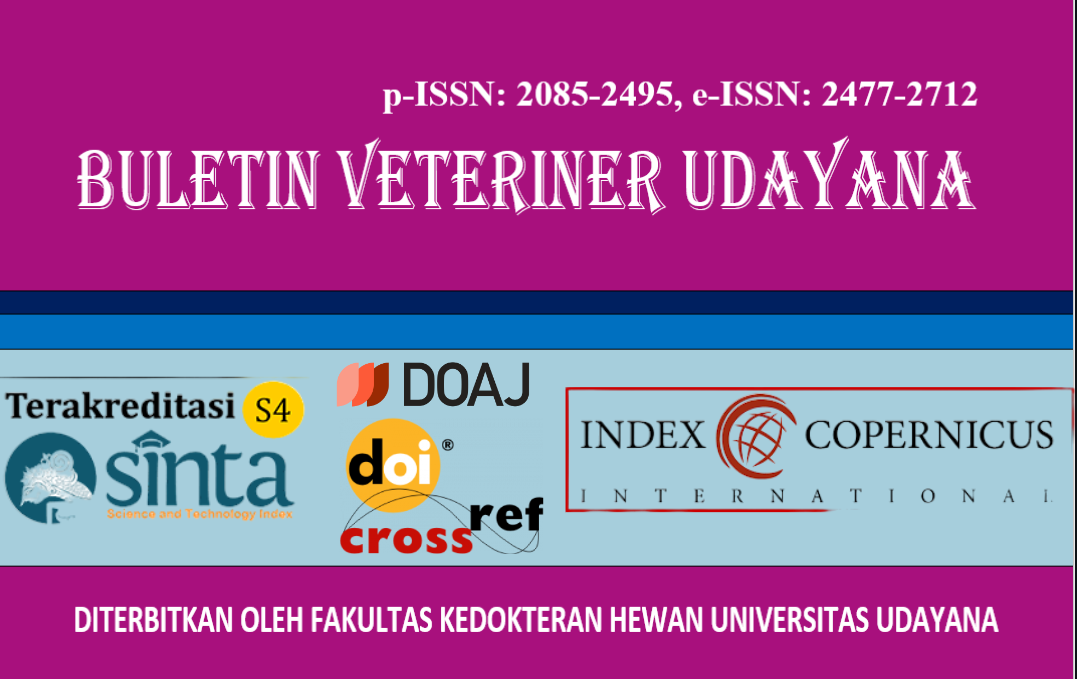FATAL CO-INFECTION OF CANINE PARVOVIRUS AND TOXOCARA CANIS IN A PUPPY: A CASE REPORT FROM DENPASAR, BALI
DOI:
https://doi.org/10.24843/bulvet.2025.v17.i05.p15Keywords:
anatomical pathology, CPV-2, histopatology, PCR, toxocariasisAbstract
This case report documents a fatal co-infection of Canine Parvovirus type 2 (CPV-2) and the nematode Toxocara canis in a 2.5-month-old, unvaccinated female local puppy in Denpasar, Bali. The animal presented with acute clinical signs including anorexia, vomiting, hemorrhagic diarrhea, and severe dehydration, leading to death. A comprehensive post-mortem examination was conducted, including necropsy, histopathology, Polymerase Chain Reaction (PCR), bacteriology, and parasitology. PCR analysis confirmed a CPV-2 infection, demonstrated by a 900 bp DNA amplicon. Macroscopic findings included multi-organ hemorrhages, cardiac enlargement with a blunt apex, and intestinal necrosis. Histopathology revealed widespread lymphocytic inflammation. Concurrently, parasitological examination identified a significant T. canis infection, evidenced by six adult worms in the large intestine and numerous eggs and larvae in the feces. While Escherichia coli was isolated from the intestines, no other systemic bacterial pathogens were detected. It was concluded that the synergistic pathogenicity of the CPV-2 and T. canis co-infection was the cause of death, with the parvovirus causing severe intestinal damage and immunosuppression, which was exacerbated by the parasitic burden. This case highlights the importance of integrated diagnostic approaches and underscores the critical need for regular deworming and routine vaccination in preventing such fatal disease combinations in puppies.




